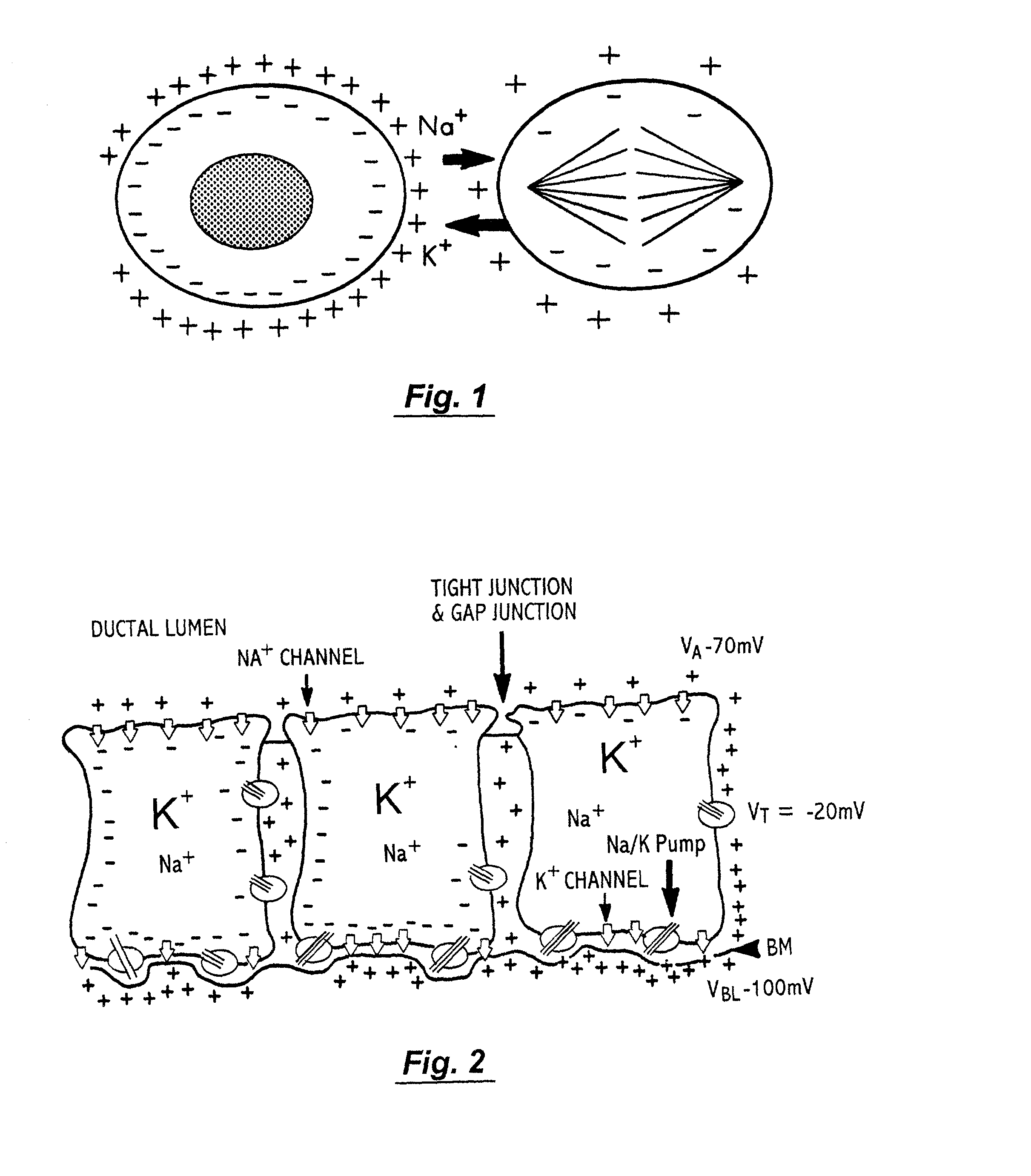Multidimensional bioelectrical tissue analyzer
a bioelectrical and tissue analyzer technology, applied in the field of multi-dimensional bioelectrical tissue analyzers, can solve the problems of affecting the widespread use of these existing technologies, presenting certain health risks to patients, and each of these existing technologies has drawbacks
- Summary
- Abstract
- Description
- Claims
- Application Information
AI Technical Summary
Benefits of technology
Problems solved by technology
Method used
Image
Examples
first embodiment
[0127] There are three distinct modes in which the acoustic subsystem of the invention is used. In each of these embodiments, an array of sensitive microphones is placed on the body at positions that a clinician considers to be most appropriate for the disorder under study. In a first embodiment, these microphones measure acoustic variations associated with the process under study, such as the heartbeat, blood flow through arteries and veins, respiration, neuromuscular activity, and the gastrointestinal tract. These passive acoustic data are preferably digitized at a rate of at least 30 kHz, and even higher rates are preferred if warranted by specific high-frequency abnormalities. The fast Fourier transform of the digitized acoustic data is calculated and compared with the resulting power spectra to that of healthy functional tissue. These data provide detailed functional data about heart health, and about air and fluid transport in organs that may become afflicted by any pathology....
second embodiment
[0128] In a second embodiment, a monochromatic acoustic wave at a preset frequency is excited by a loud speaker in contact with the body at a position determined by the clinician. The array of microphones detects only that part of the total acoustic response that is at the drive frequency, and at a constant phase relationship to the drive. The resulting magnitude of the sound observed at each microphone using this synchronous detection technique is used to infer the acoustic impedance magnitude and phase angle at that position in the array. This acoustic impedance is modulated by a slower (much slower compared to the period of the acoustic wave) biological process, such as the heartbeat, respiration, gastrointestinal activity, etc. These measurements provide far more detailed information and detect far more pervasive patterns specific to the pathology than do simple potential sensing, as in systems such as electrocardiography (EKG), electroencephalography (EEG), electromyography (EM...
third embodiment
[0129] In a third embodiment, the microphone array is taken out of the synchronous detection mode, and set to sense frequencies that are detuned from the drive frequency. This detection technique provides information about the nonlinear acoustic character of the tissue as a function of drive amplitude, and also as a direct sensor of acoustic Doppler-effect detuning associated with fluid flow or mass motion in the body.
[0130] 6.9. Exemplary Applications
[0131] While the invention has been described above with particular reference to the detection and characterization of cancer within a human or animal body, it is not so limited. Several examples of the application of the invention to both oncologic and other applications are described below.
[0132] 6.9.1. Oncologic
[0133] In several embodiments, the invention is used in the diagnosis of oncologic disease. While devices in the prior art are able to distinguish benign from proliferative (i.e. premalignant and malignant) epithelium, the mo...
PUM
 Login to View More
Login to View More Abstract
Description
Claims
Application Information
 Login to View More
Login to View More - R&D
- Intellectual Property
- Life Sciences
- Materials
- Tech Scout
- Unparalleled Data Quality
- Higher Quality Content
- 60% Fewer Hallucinations
Browse by: Latest US Patents, China's latest patents, Technical Efficacy Thesaurus, Application Domain, Technology Topic, Popular Technical Reports.
© 2025 PatSnap. All rights reserved.Legal|Privacy policy|Modern Slavery Act Transparency Statement|Sitemap|About US| Contact US: help@patsnap.com



